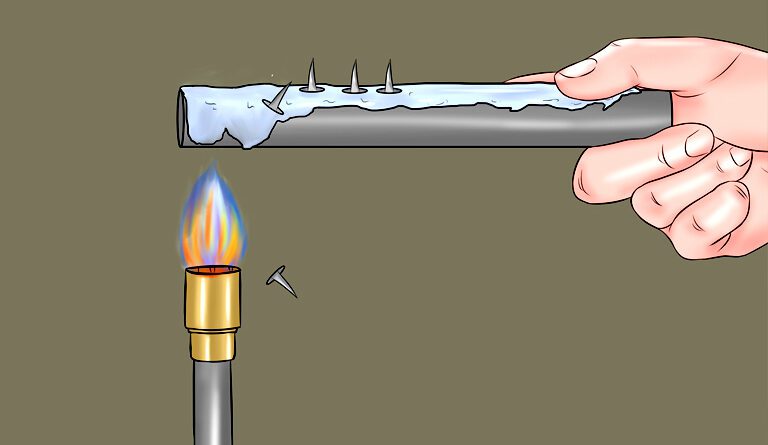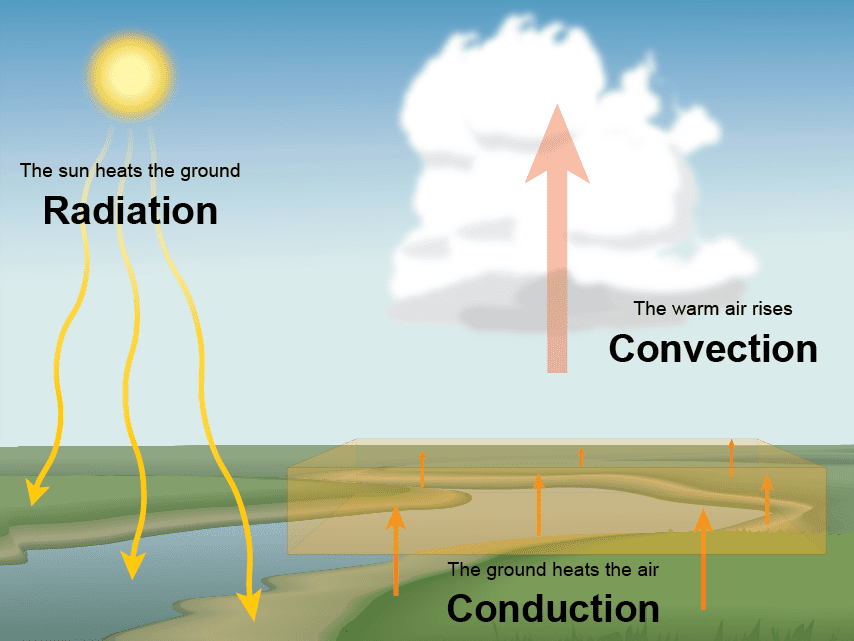Heat Experiment – Conduction, Convection, and Radiation
Heat Experiment For Class 7
Curiosity Questions:
-
Why does the same cup of water feel hot to one hand and cold to the other?
-
How does heat travel from one end of a spoon to the other without moving the spoon?
-
Why do black clothes feel hotter than white ones under the sun?
STEM Challenge Introduction:
In this exciting STEM challenge, you’ll explore the three main modes of heat transfer conduction, convection, and radiation and discover how our sense of “hot” and “cold” can be misleading. Through hands-on experiments, you will learn how heat travels through materials, how fluids circulate heat, and how different surfaces absorb heat differently. This experience will not only help you understand the science behind heat but also encourage critical thinking about everyday situations like cooking, dressing, or choosing building materials.
Materials Required:
Relativity of Temperature:
-
3 bowls (same size).
-
Hot water (around 50–60°C).
-
Cold water (with a few ice cubes).
-
Room temperature water.
Conduction:
-
Metal rod (steel or aluminum, about 30 cm long).
-
Candle or spirit lamp.
-
Wax or clay.
-
3-4 small pins.
-
Clamp or stand to hold the rod.
Convection in Water:
-
Transparent glass container (like a beaker or jar).
-
Water.
-
Potassium permanganate crystals (a few grains).
-
Heat source (stove or candle).
Radiation:
-
Two metal or cardboard sheets (painted black and white)
-
Thermometer (or feel by touch if thermometer is unavailable)
-
Lamp or sunlight
Eco-Friendly Tips:
Reuse old jars, cardboard, or aluminum sheets. Clay can be used instead of wax.
Safety Precautions:
-
Always handle hot water and flames with adult supervision.
-
Use heat-resistant gloves or cloth to manage hot containers.
-
Be careful when dealing with potassium permanganate use small amounts and wash hands after.
-
Never touch the metal rod or surfaces directly after heating.
Step-by-Step Process:
1. Relative Perception of Temperature:
-
Fill one bowl with hot water, another with cold, and the third with room-temperature water.
-
Place your left hand in the cold water and right hand in the hot water for 1-2 minutes.
-
Now dip both hands into the room-temperature water simultaneously.
-
Observe the sensations in both hands.
2. Conduction Experiment:
-
Fix small pins to the metal rod using small blobs of wax.
-
Support the rod horizontally using clamps.
-
Light a candle and heat one end of the rod.
-
Observe which pin falls first and the sequence in which others fall.
3. Convection in Water:
-
Fill the transparent jar with water.
-
Gently drop a grain of potassium permanganate in one corner.
-
Carefully heat the bottom of the jar and observe the movement of the purple stream.
4. Radiation Experiment:
-
Place both the black and white surfaces under sunlight or near a heat lamp.
-
After 5-10 minutes, touch each surface or measure the temperature.
-
Compare how warm each surface feels.
Expected Outcome:
-
The same room-temperature water will feel hot to one hand and cold to the other, showing that temperature perception is relative.
-
Pins will fall in sequence from the heated end, showing conduction through the metal.
-
Potassium permanganate stream will show upward flow, demonstrating convection currents.
-
The black surface will feel warmer than the white, indicating radiation absorption difference.
Observation:
-
Did both your hands feel the same in the room-temperature water?
-
Which pin fell off first in the conduction setup and why?
-
How did the purple color move in the water jar?
STEM Concepts Behind It:
-
Conduction: Transfer of heat through solids by particle vibration.
-
Convection: Movement of heat through fluids (liquids and gases) via currents.
-
Radiation: Transfer of heat through electromagnetic waves, even in a vacuum.
-
Relative Perception: Our skin senses temperature comparatively, not absolutely.
Concept Elaboration:
These experiments link to real-world mechanisms. For example, metal utensils conduct heat quickly, so they get hot when cooking. Warm air rises in rooms due to convection. Solar panels and home insulation rely on radiation and absorption properties. Understanding these helps engineers design safer tools, better buildings, and more efficient machines.
Real-Life Applications:
-
Conduction is key in cookware, heat sinks, and engine parts.
-
Convection principles are used in HVAC systems, ocean currents, and boiling food.
-
Radiation understanding helps in solar panel design, thermal insulation, and even astronaut suits.
-
Perception of temperature is vital in designing ergonomic products and thermal sensors.
Your STEM Challenge:
Design your own solar oven using a pizza box, aluminum foil, and black paper. Can you use radiation to melt chocolate or warm a snack? Think about how each part of the oven uses conduction, convection, or radiation.
Think Further & Explore More:
-
How does heat transfer work in a vacuum, like in space?
-
What materials are best insulators and why?
-
Can you design a system that slows down heat loss from a cup of tea?
Explore further by investigating thermal insulation materials, or try building a convection tower to visualize warm air rising.
Explore this simulation : Energy forms and changes
Dont Miss It: How to Make a Simple Electric Circuit in TinkerCAD?


